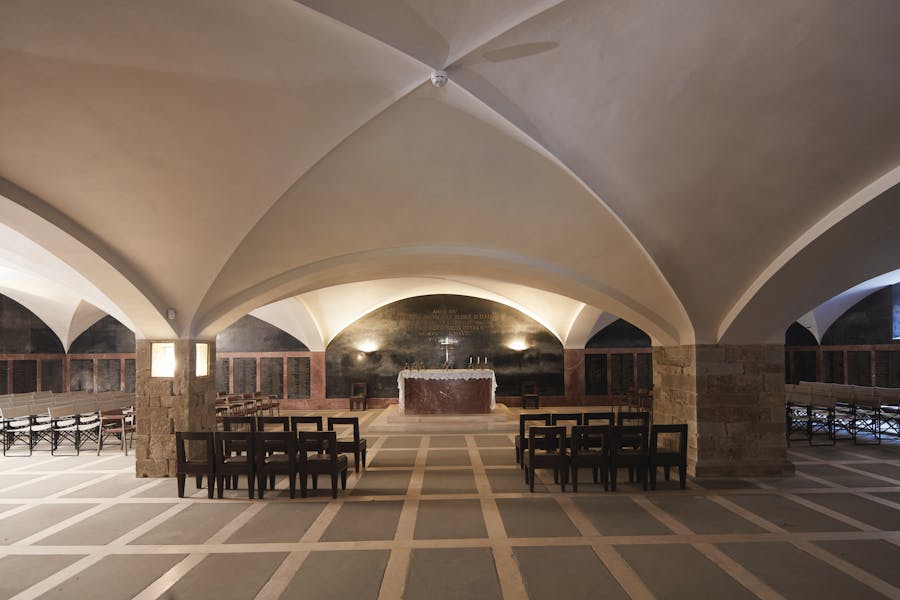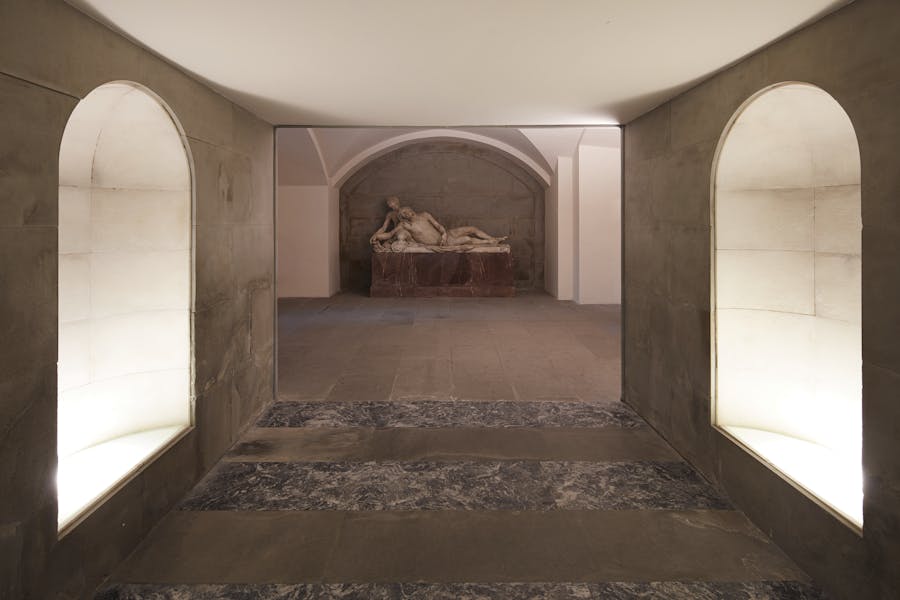
Crypt and Famedio
The area beneath the transepts and sacristy, the first part of Santa Croce to be built, has always been used as a burial ground and as the seat of religious confraternities. After confraternities were suppressed in 1785, and following flood damage in 1844, the area began to be used for storage purposes.
A determination to impart legitimacy to Fascism in a nationalistic sense, given Santa Croce's role as the "Pantheon of the Italians", led to a decision in 1934 to use part of the undercroft to build a "Shrine to the Fallen for the Fascist Revolution" to a design by the architect Alfredo Lensi, who ran the municipal Fine Arts Office at the time. Another shrine, again to a design by Lensi, was built on Via de' Malcontenti in 1938 to commemorate the fallen in Africa and Spain, and it was visited by Hitler and Mussolini when they met in Florence on 9 May.
In 1934 Lensi had also redesigned the space below the sacristy to commemorate the Florentines who had fallen in the Great War. Known as the "famedio", it was officially opened by King Victor Emmanuel III on 4 November 1937, the 19th anniversary of victory in World War I.

Interior of the Famedio
The Shrine was overhauled between 1950 and 1956 and rededicated to all Florentines fallen for the motherland since 1918, while the famedio, dedicated to the fallen in a war whose memory is uncontroversial, was not altered and still maintains its original aspect and furnishings to this day.

Interior of the Shrine with Baccio Bandinelli's Dead Christ with an Angel. Florence, Santa Croce, monumental complex